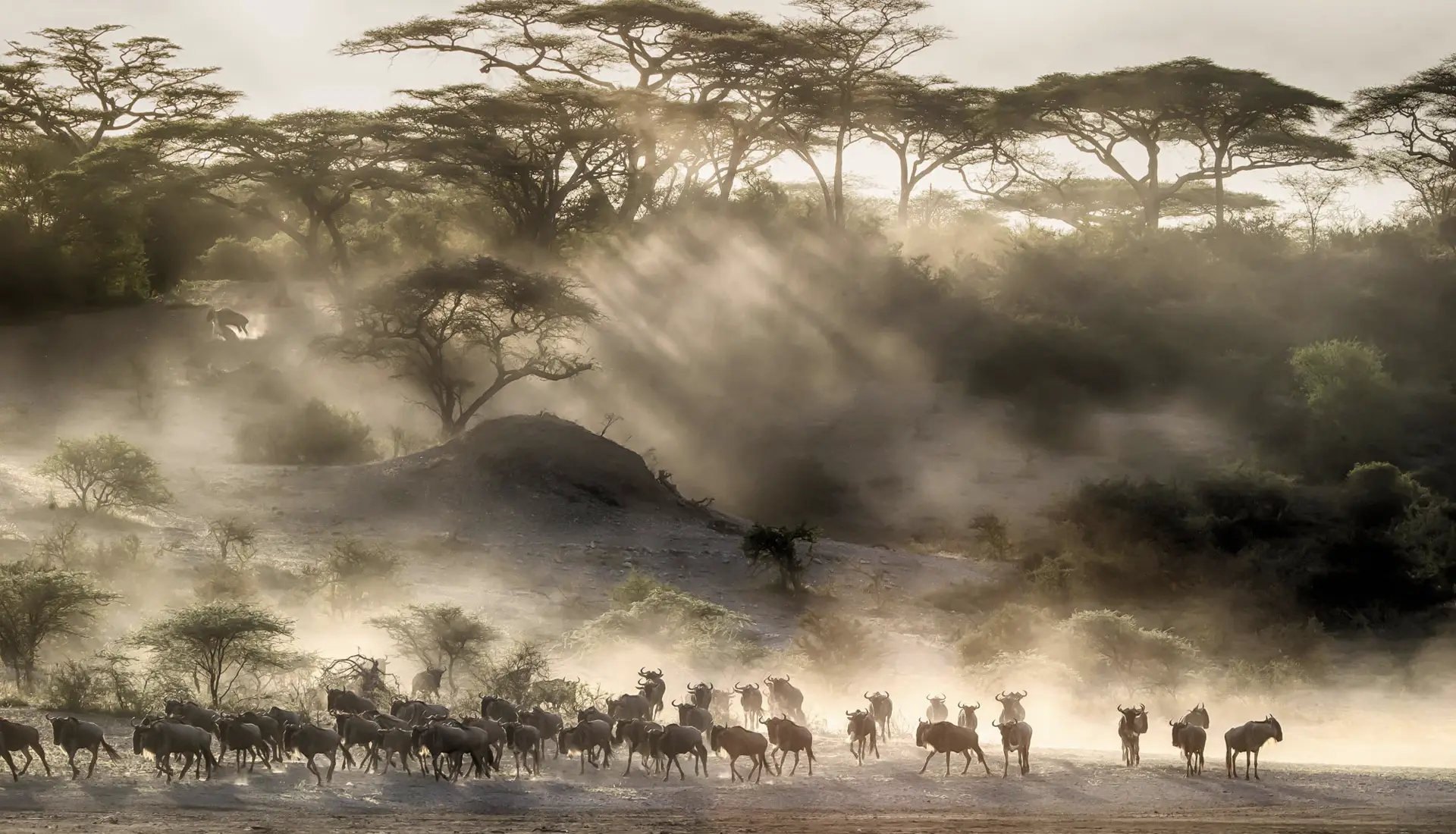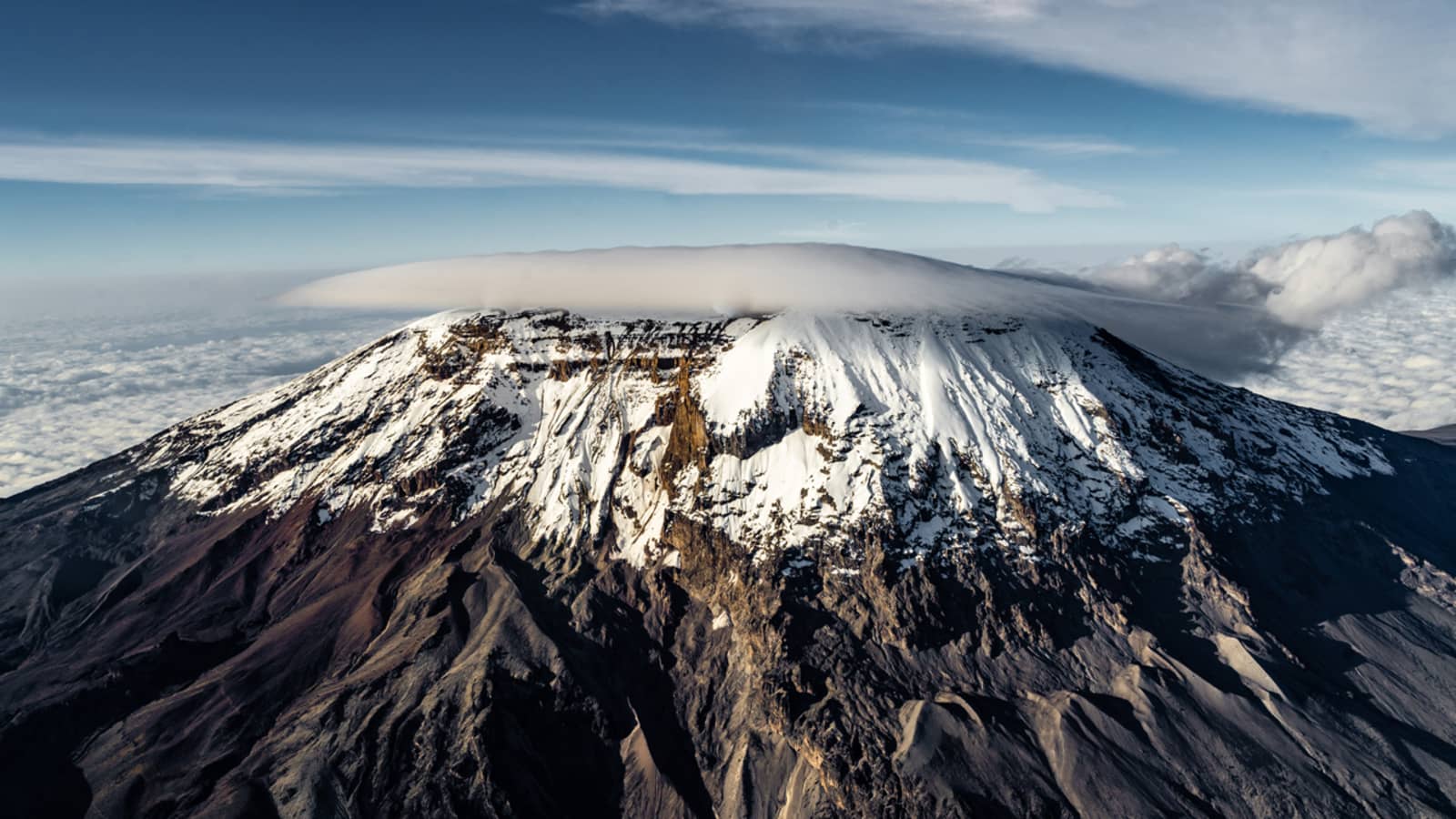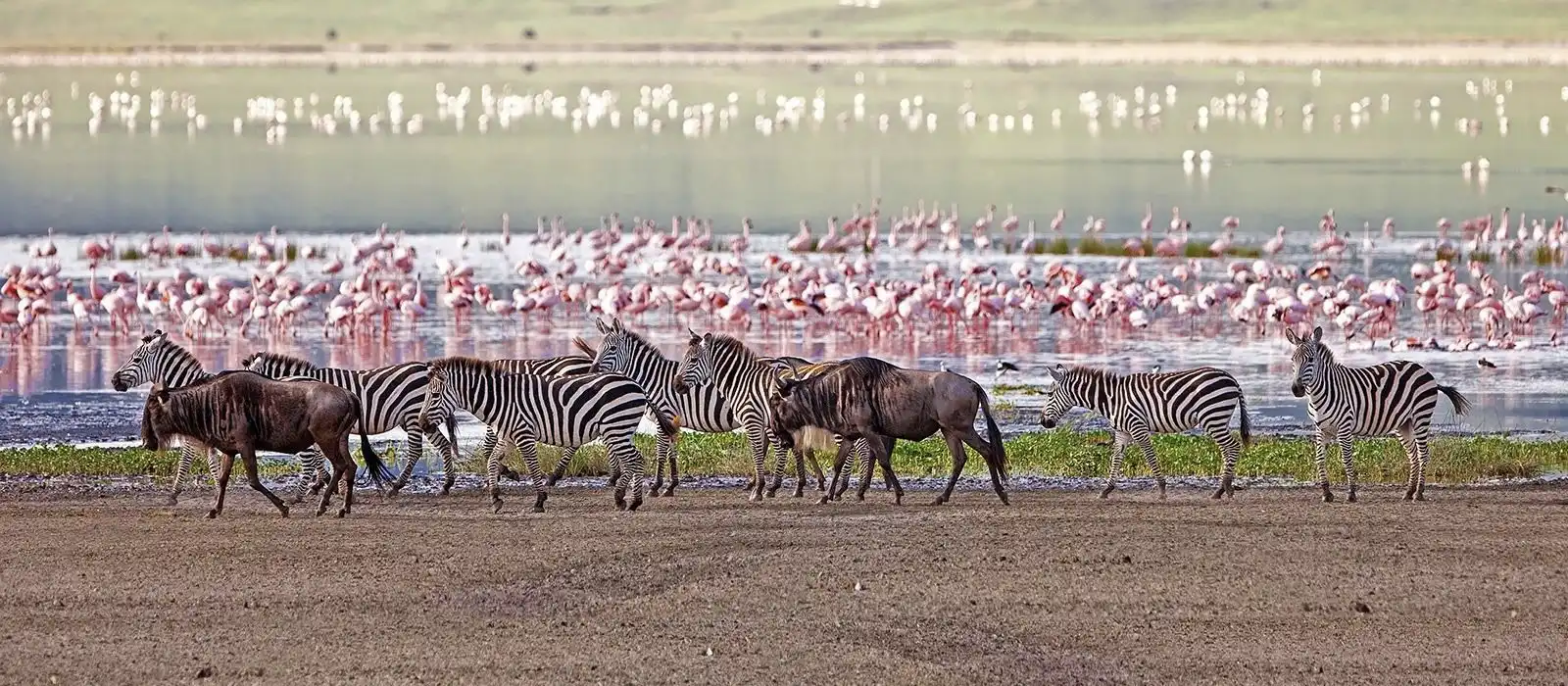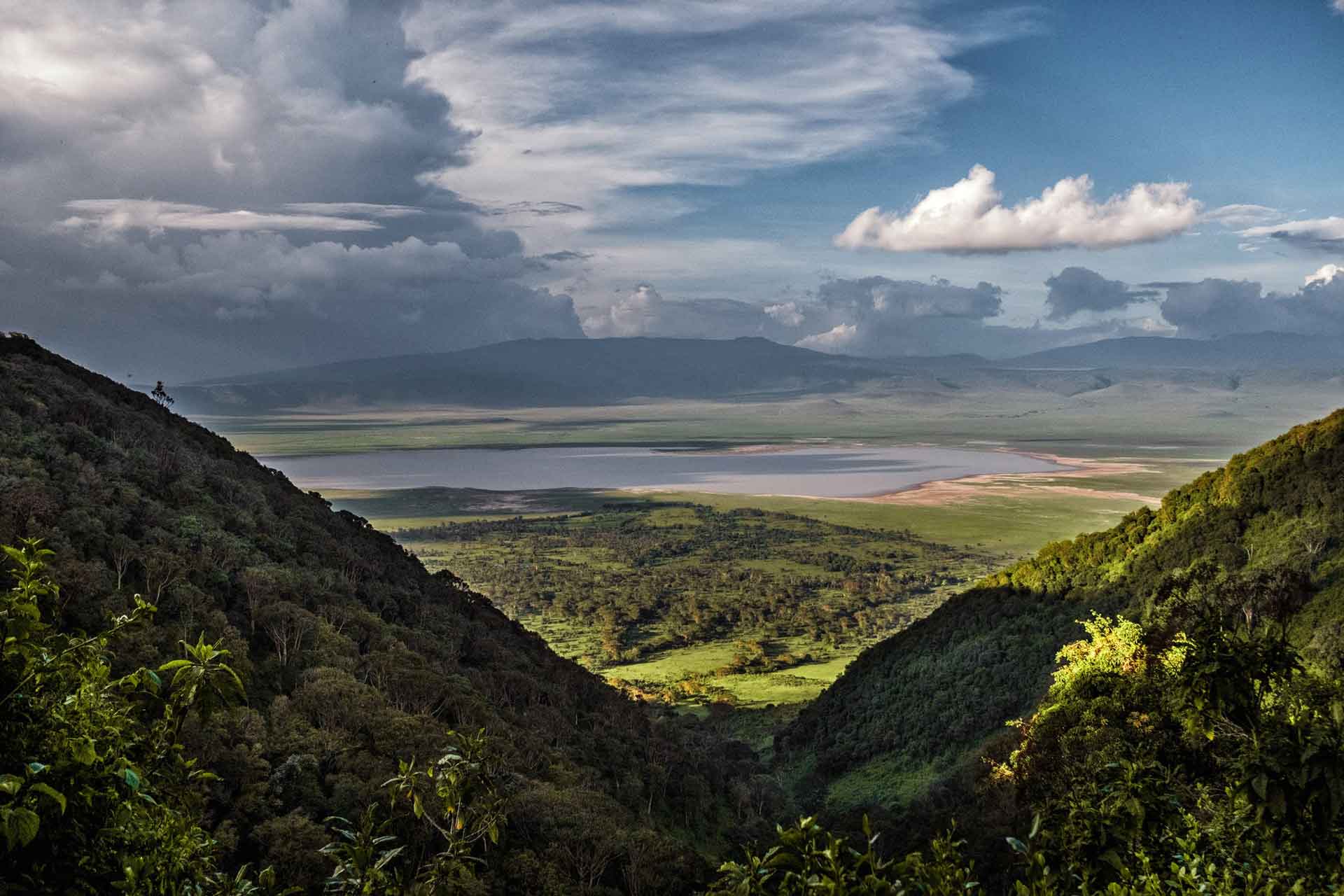Rubondo Island
national park
The park is located on the southwestern corner of Lake Victoria in the Geita region about 150 km (95 miles) west of Mwanza. Lake Victoria is the second-largest lake in the world. The park has 456.8 km2 of which 236.8 km2 is dry land and 220 km2 is water comprising 11 small islets of varying sizes.
Welcome to Rubondo Island National Park
Rubondo Island was gazetted officially as National Park in 1977. It is an important breeding ground for both migratory bird and fish species especially Tilapia and Nile perch as for a long time it stood to be the only area in the waters of Lake Victoria which was well protected and preserved.
About 80% of the park is covered by a dense forest thus providing a variety of habitats for indigenous wildlife such as Sitatunga, hippos, bushbucks, velvet monkeys, genet cats, crocodiles, bush pigs, etc sharing the ecological niches with the introduced species such as chimpanzees, elephants, giraffes, black and white colobus monkeys, suni and African grey parrots.
How To Get There.
Rubondo Island can be reached by Air Chatters and Public transport & then boats to the park.
(A)By Air: Rubondo Island can be reached both by charter/air. Visitors who prefer to travel by air should in advance check with the tour operators in Bukoba, Mwanza, Arusha, and Dar es Salaam for flight schedules.
(B) By public transport and Boat: By public transport leads you from Mwanza to Nkome via Geita town which is approximately 3-4 hours (164km) drive, 100km through a tarmac, and 64 rough roads. At Nkome Rangers post you can be picked up by park boat and will take 1 hour to the park. Another route is Mwanza to Mganza through Bukoba road (270km – 5hrs), Biharamulo to Mganza through Chato – Bukoba road, and from Bukoba to Mganza through Bukoba – Chato road. At Muganza you can take a taxi or motorcycle (5min) to Kasenda where Park boats are parked and there you will be picked up by a park boat and will take about 20-25 min to the park.
Note: Communication and transport arrangements should be done prior to the park visit.
Best Time To Visit Park.
The best time is from June through September and the wet season is from November to March when wildflowers are flourishing and plentiful butterflies
For bird watchers is from December to February when most migratory birds are nesting.
PARK ATTRACTIONS.
The park is bestowed with magnificent attractions that tourists can enjoy these include a diversity of wildlife including elephants, giraffes, bushbucks, hippos, yellow-spotted otters, crocodiles, chimpanzees, and sitatunga, and offers the best fish breeding sites. other attractions are bird diversity with more than 400 species of nesting birds resides the park. The grey parrot, introduced in 2000 when 34 birds were rescued from illegal trade, is a spectacular newcomer. Another noisy specimen is the African fish eagle.
Chimpanzees – currently being habituated – few Chimps are now used for tourism Habituation Experience (CHEX). One can travel by car to Chimps’ areas and join the chimps’ habituation crew and be a part of habituation.
Other mammals: Other mammals that are frequently seen are Giraffes, Hippopotamus, Sported necked otters, Bushbucks and Velvet Monkeys. Colobous monkeys, Genet Cats, Marsh Mongoose, Suni, and Elephants.
Magnificent view of evergreen dense primary lowland Congolese forest-More than 80% of Rubondo Island National Park is covered by an intense primary lowland Congolese forest. Thus providing a variety of wildlife habitats sharing similar ecological niches such as elephants, giraffes, chimpanzees, black & white colobus monkeys, Suni, African grey parrots, etc.
Variety of water birds at Birds’ Island: RINP is one of the sites with the highest density and concentration of Birds in Tanzania. Also, RINP provides the best habitat for birds migrating between the southern and northern hemispheres.
Variety of Reptiles: Reptiles such as snakes (pythons), monitor lizards, and crocodiles: These are reptiles that are found in the park but some are rarely seen. Most reptiles maintain their body temperature by absorbing heat from their surrounding and have bodies that change accordingly to the local atmosphere which means they cannot control their own body temperature.
There are three main cultural sites Maji matakatifu, Ntungamirwe, and Alutare.
The famous Maji Matakatifu was historically used as a ritual area by Native Zinza who lived in Rubondo before the area was upgraded as a National Park. One example of the ritual was to make women and men who did not have children have children.
Near the Kageye area, just beneath Pongo Viewpoint along the tourist trail, there is still visible and intact a sacrificial site, one of the most popular sacred sites used by the Native Zinza tribe for traditional and spiritual beliefs. The rock can be delineated from the surrounding rocks due to its white coloration.
Alutare
This is an important historical site, used during wars with enemies of the Banyarubondo. Enemies included Baganda people from Uganda, who attacked them, especially after the harvest season to steal cereals. The natives hid in Karobhela caves at Alutare during the wars. The natives like to compare this entrance with an entrance to a cathedral. This is why the whole area was named “Alutare”, which means “altar”.
Magnificent view of evergreen dense primary lowland Congolese forest-More than 80% of Rubondo Island National Park is covered by an intense primary lowland Congolese forest. Thus providing a variety of wildlife habitats sharing similar ecological niches such as elephants, giraffes, chimpanzees, black & white colobus monkeys, Suni, African grey parrots, etc.
Beautiful beaches such as Michungwani and Michikoko: The Island has every type of imaginable beach; white sand, gravel, and stones and shorelines popular for visitors watching wildlife and enjoying the Lake breeze. Also, beaches are frequently visited and inhabited by wildlife such as hippos, crocodiles and elephants, white-necked Otters, etc.
Other attractions include a variety of colorful frogs and insects such as dragonflies and dung beetles.
Rubondo Island is a place you can relax for two minutes. This is due to its natural beauty and calmness. Is a place you can enjoy colorful sunrise and sunset while listening to bird songs.
Tourism Activities
It is the most exciting recreational activity in which there is a great possibility of getting a big catch to make a wonderful and challenging record of catches among others.
one can view the spectacular beauty of the island, beaches, a variety of water birds, crocodiles, the deepest point in Lake Victoria “Irumo”, hippos, otters, and plant species along the shores as well as enjoy the cool lake breeze.
(Short and long) up to 4 hrs and above depending on the requests - One can enjoy seeing animals such as suni, mongoose, genet cats, monkeys, bush pigs, sitatunga, bushbucks, etc. Also, reptiles, orest birds, viewing the lake & shores, etc.
There is a possibility of watching big games such as elephants, giraffes, and other mammals, reptiles, amphibious, and a variety of forest birds.
One can join the Chimps habituation crew to experience how chimps are habituated in their natural state without using any artificial means of attracting them to humans (e.g. feeding, playbacks, etc.)
Canoeing is one of the recreational activities on Lake Victoria with the aim of diversifying activities in the park. The activity involves paddling a canoe and is done as or as a part of a sport.
ACCOMMODATION
Inside the Park
The park owns self-catering and self-contained visitor 5 bandhas and a rest house but not exclusive for families, while at times providing a camping site for visitors with tents or offering tents.
Customised Vacation To Tanzania?
Wildlife Safaris, Beach holidays, Kilimanjaro trekking, Hiking and cultural tours
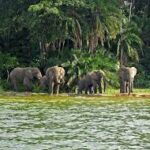
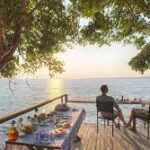
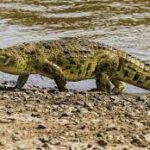
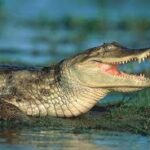
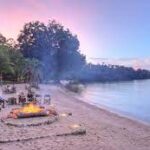


Other Destinations
Wildlife Safaris, Beach holidays, Kilimanjaro trekking, Hiking and cultural tours

